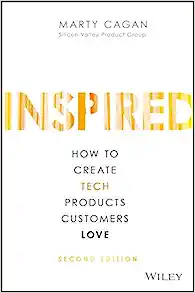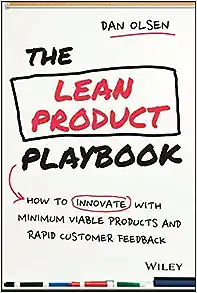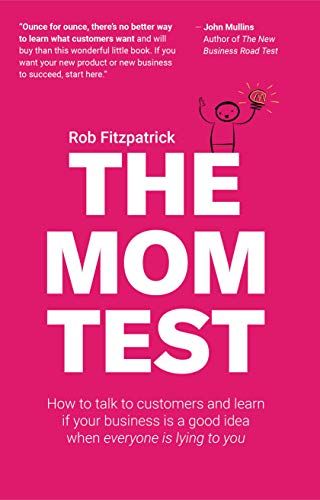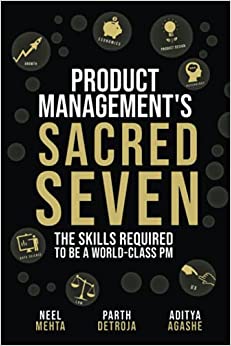
9 Best Product Management Books for Product Managers in 2024
In the ever-evolving landscape of product management, continuous learning is key. A good product manager navigates through complexities, understands the market's pulse, communicates effectively with diverse teams, and ultimately, ensures that products create value for both the users and the business.
While practical experience plays a significant part, reading books is one of the most effective ways to grasp the nuances of product management and stay updated with the latest trends and strategies.
Whether you are an aspiring product manager preparing for your first role, a seasoned pro looking to level up, or a business leader wanting to understand the strategic importance of product management, we have curated a list of the 9 best product management books. These must-reads will equip you with the knowledge, insights, and inspiration you need to excel in your product management journey. So let's dive in and explore.
Why are Product Management books important?
Product management books are essential for several reasons:
- Knowledge and Skill Building: Product management books provide invaluable insights into successful product managers and companies' strategies, tactics, and methodologies. They can help you acquire and develop the skills you need to excel in your role, such as user research, data analysis, feature prioritization, product roadmap planning, stakeholder management, and leadership.
- Understanding Best Practices: Books often present industry best practices proven to work in different contexts. Understanding these practices can help you avoid common mistakes and implement effective strategies.
- Innovation and Creativity: Many product management books offer innovative ideas and approaches to spur creativity and inspire you to think outside the box. They can provide you with new perspectives on how to solve problems, meet user needs, and differentiate your product in the market.
- Career Development: Reading product management books can also help your career development. They can prepare you for job interviews, help you navigate the challenges of a new role, or position you for a promotion to a senior or executive role.
- Industry Trends: These books can also keep you up-to-date on the latest trends in product development, technology, and user behavior, helping you keep your product relevant and competitive.
- Case Studies and Real-world Examples: Many product management books include case studies and real-world examples that provide practical, hands-on learning. These can provide invaluable insights into how theory translates into practice.
9 Best Product Management Books for Product Managers in 2024
1. The Product Book: How to Become a Great Product Manager by Josh Anon and Carlos González de Villaumbrosia

It is an excellent resource for anyone looking to build a career in product management. Published by Product School, it's an essential read for new and aspiring product managers.
The book provides a comprehensive, step-by-step guide to becoming a product manager, beginning with an explanation of what product management is and what the role of a product manager entails.
2. Inspired: How To Create Products Customers Love by Marty Cagan

It discusses the job of a product manager and provides many tips on improving the product development process. The book provides a comprehensive overview of the role of a product manager and discusses essential topics such as:
- The role of a product manager: Cagan begins by defining the role of a product manager and explaining how it differs from other roles in an organization. He covers the skills, backgrounds, and characteristics of effective product managers.
- The product team: He stresses the importance of having a strong, cross-functional product team and explores the dynamics of such internal customer-facing teams.
- The product development process: Cagan provides detailed insights into the product development process, discussing various stages from idea generation, product discovery, and validation to execution.
- Product strategy and vision: The book emphasizes the importance of having a clear product vision and strategy. Cagan offers practical advice on defining a compelling product strategy and shares methods to communicate it effectively.
- Customer discovery: This section covers techniques and methods for understanding customer needs, focusing on user experience and interaction design.
- Product planning: Here, the reader learns about prioritizing the product backlog, making difficult product decisions, and managing stakeholders' expectations.
- Product execution: Cagan shares strategies for working effectively with the engineering and design team, validating assumptions, and releasing high-quality products.
3. The Lean Product Playbook: How to Innovate with Minimum Viable Products and Rapid Customer Feedback by Dan Olsen

It introduces the Lean Product Process, a repeatable, easy-to-follow methodology for iterating your way to product-market fit. It is a step-by-step guide to applying lean principles to product development. It benefits product managers, designers, and entrepreneurs looking to improve their product development process and build products that customers love.
The Lean Product Playbook is filled with real-world examples and case studies. Its practical, hands-on approach to product development makes it a valuable resource for anyone developing and marketing new products.
In the book, Olsen provides a detailed and actionable guide to implementing the Lean Product Process, an iterative methodology to achieve product-market fit. The critical steps of this process are:
- Determining your target customer.
- Identifying underserved customer needs.
- Defining your value proposition.
- Specifying your minimum viable product (MVP) feature set.
- Creating your MVP prototype.
- Testing your MVP with customers.
4. Crossing the Chasm by Geoffrey A Moore

The book presents the "Technology Adoption Life Cycle", a curve showing how different customers adopt new technologies at different rates. From earliest to latest adopters, the groups are Innovators, Early Adopters, Early Majority, Late Majority, and Laggards.
Moore's central thesis is that there's a "chasm" between the Early Adopters and the Early Majority. While Early Adopters are willing to put up with the glitches and lack of support that often come with new technology in exchange for getting ahead, the Early Majority needs solid evidence that the technology works and is worth their investment. They want a complete solution, not a do-it-yourself kit.
Crossing the chasm is about moving from a product-based orientation to a market-based one, and it requires a whole product approach where you satisfy not just the core needs but also the auxiliary ones to create a complete solution for your users.
This book provides valuable insights and strategic tactics for moving from niche markets to broader audiences—a key challenge for many tech startups. It's a must-read for product managers, especially those in the tech industry, as it helps understand market dynamics and the challenges faced in getting products adopted by mainstream customers.
5. The Mom Test: How to Talk to Customers and Learn If Your Business Is a Good Idea When Everyone Is Lying to You by Rob Fitzpatrick

It is a practical guide on how to ask customers for feedback without biasing their responses. It's an invaluable resource for entrepreneurs, product managers, and anyone in a customer-facing role.
The book's title comes from Fitzpatrick's assertion that you should be able to get unbiased feedback from anyone, even your mom. Essentially, you should ask questions about a person's life and behaviors instead of asking whether your business idea is good.
Here are the key points from the book:
- Talk about the customer's life instead of your idea. Ask about specific behaviors, pains, and goals related to the problem your business or product intends to solve. Listen to the voice of the customers.
- Rather than just collecting compliments or positive feedback, ask for a concrete commitment like pre-orders, sign-ups, or introductions.
- Embrace the fear of knowing the truth. Fitzpatrick encourages entrepreneurs to genuinely seek out and respond to negative feedback that can help to pivot or improve the product early on, rather than fearing the potentially bad news.
- Ask for specifics in the past instead of generics or future predictions
The Mom Test is a quick read with a hands-on approach, filled with practical examples. It's a must-read for anyone seeking to validate business ideas, improve products, or better understand and meet customers' needs.
6. The Lean Startup: How Today's Entrepreneurs Use Continuous Innovation to Create Radically Successful Businesses by Eric Ries

It is a highly influential book in entrepreneurship and product management. The book has popularized the "lean startup methodology," a business strategy to create and manage start-ups.
The Lean Startup offers practical advice for innovating and launching products that customers want, faster and with much less initial capital. It's highly recommended for entrepreneurs, product managers, business strategists, and others interested in creating innovative products or services and building a customer-centric company.
Key concepts from the book include:
- Build-Measure-Learn
- Minimum Viable Product (MVP)
- Validated Learning
- Innovation Accounting
- Continuous Deployment and Split-Testing
7. Shape Up: Stop Running in Circles and Ship Work that Matter by Ryan Singer
It is an insightful book that offers practical and innovative strategies for product development. Singer is a product strategist at Basecamp, a leading project management and team communication software company, and this book distills the processes and techniques Basecamp uses to develop its products.
Shape Up offers a fresh perspective on product development that can benefit teams who feel stuck in their current methods or processes. It provides clear, actionable advice that can be implemented to improve efficiency, creativity, and overall product quality.
8. Product Management's Sacred Seven: The Skills Required to Crush Product Manager Interviews and be a World-Class PM by Parth Detroja, Neel Mehta, and Aditya Agashe

This book provides a comprehensive view of the role of a product manager and the skills required to succeed in the job. It is a comprehensive guide for anyone looking to succeed in product management, whether you're preparing for interviews or looking to upskill in your role.
Each section of the book deeply delves into these topics, providing a thorough understanding of each area and practical advice and tips. The authors use real-world examples from well-known companies to illustrate their points and provide clarity. Whether you're an aspiring product manager or a seasoned pro, this book provides valuable insights into what it takes to succeed.
The book outlines seven key areas that product managers must be proficient in, known as the "Sacred Seven":
- Design Thinking
- Business Strategy
- Growth
- Monetization
- Technical Fluency
- Data
- Operations and Leadership
9. Escaping the Build Trap: How Effective Product Management Creates Real Value by Melissa Perri

It is a popular and essential book for anyone involved in product management. It focuses on the common pitfall of companies becoming too focused on shipping features, rather than creating value, leading to what Perri calls "the build trap".
Escaping the Build Trap is a valuable resource for product managers, executives, and others involved in product development. It provides practical advice and strategies to ensure that product development efforts are aligned with business objectives and truly create value for the customer.
Conclusion
The books we've discussed in this blog provide a wealth of knowledge from industry experts, with practical advice, innovative ideas, and timeless wisdom. They equip you with essential skills and tools and inspire you to become a better leader, strategist, and communicator. These texts benefit every product manager, whether you're starting on your journey or are a seasoned veteran.
Remember, the quest for knowledge is a never-ending process, especially in a domain as dynamic as product management. So keep reading, stay curious, and continue to develop your craft. These books are stepping stones to becoming an extraordinary product manager.
Happy reading, and here's to your success in the fascinating world of product management!
FAQs
Who is a Product Manager?
A product manager is key in organizations, particularly in the technology or service industries. This person oversees the entire life cycle of a product, from the initial concept through development and launch, and then continuing with ongoing product enhancements and upgrades.
What are the responsibilities of a Product Manager?
A product manager's responsibilities typically include:
- Identifying Market Needs and conducting market research to understand the needs and desires of customers.
- Defining the Product Vision based on market research, company strategy, and their understanding of customer needs.
- Developing the Product Strategy includes its market positioning, key features and benefits, and target customers.
- Overseeing Product Development according to the defined strategy.
- Managing the Product Lifecycle from development to launch, growth, maturity, and eventually, retirement.
- Collaborating with various departments such as sales, marketing, customer success, etc.
- Tracking key metrics and KPIs to gauge the product's success, and making necessary adjustments to the product strategy based on these insights.
How can I learn Product Management?
Product Management is a multidisciplinary field combining business, technology, and user experience. Learning product management involves understanding these different areas and developing various skills. Here are some steps to help you learn product management:
- Understand the Role: Research what a Product Manager (PM) does and understand the various facets of the role. A PM is a cross-functional leader who guides every step of a product's lifecycle, from conception to launch.
- Study: Start with reading books and blogs about product management. Some recommended books mentioned above are quite popular.
- Courses and Certifications: Many online courses can help you understand the nuances of Product Management. Websites such as Coursera, Udemy, and edX have courses related to this. Institutions like Product School and Pragmatic Institute offer certification programs.
- Networking: Join product management communities both online and offline. Websites such as Meetup often have groups for Product Managers.
- Get Hands-On Experience: If you're currently working in a company, see if there are opportunities to take on product-related tasks or projects. If you're not yet working, consider internships or volunteering for startups.
- Learn Relevant Tools: Familiarize yourself with tools commonly used in product management, such as Jira for project management, Google Analytics for data analysis, Rapidr for customer feedback management, and Sketch or Figma for prototyping.
- Develop Soft Skills: As a product manager, you'll be coordinating with different teams, making decisions, and presenting your ideas. Therefore, it's important to develop skills like communication, leadership, decision-making, negotiation, and stakeholder management.
- Case Studies: Read case studies of successful and unsuccessful products. Try to understand why a product failed or succeeded. What decisions were made? What were the market conditions? What was the user feedback? This will help you understand the real-world implications of product management.
- Mentorship: If possible, find a mentor who is an experienced PM. They can provide guidance, feedback, and advice based on their experiences.
- Stay Updated: The field of product management is constantly evolving. Stay updated by following influential people in the industry, attending webinars, workshops, and conferences, and regularly reading relevant articles and reports.

